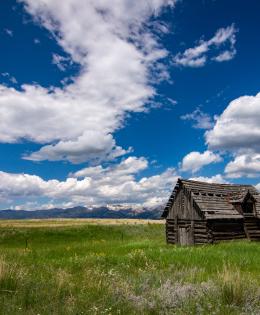

The Natural Resources Conservation Service (NRCS) in Vermont aims to conserve Vermont’s soil, water, air, and other natural resources. We deliver conservation solutions to agricultural producers and landowners implementing voluntary conservation on working lands to help feed a growing world.
Welcome to the Vermont NRCS webpage. The Vermont NRCS webpage contains Vermont-specific information, tools, and resources related to conservation. Browsing our website, you can find news, technical and programmatic information, contact information, success stories, event listings, and more.
News & Updates
The most up-to-date information on staffing, program deadlines, and news releases & events for NRCS Vermont.
Vermont State Office

Vermont Service Centers
Vermont NRCS operates from ten USDA offices and Service Centers located around the state. Find NRCS and Conservation District staffing information by zone here.


Vermont Water Resources
Information on Vermont Water Resources focusing on the National Water Quality Initiative and source water protection.

Vermont Conservation
Success stories, cultural resources, and other aspects of conservation in Vermont.

Vermont NRCS Blog
The NRCS Blog is a place for partners, agencies, customers, and the entire Vermont community to keep up-to-date with everything at NRCS.

State Payment Schedule
NRCS provides financial assistance for selected conservation practices. The availability and amount of financial assistance can vary between states.

State Technical Committee
State Technical Committees serve in an advisory capacity to the Natural Resources Conservation Service (NRCS) and other agencies of the U.S. Department of Agriculture (USDA) on the implementation of the natural resources conservation provisions of Farm Bill legislation.
How to Get Assistance
Do you farm or ranch and want to make improvements to the land that you own or lease?
Natural Resources Conservation Service offers technical and financial assistance to help farmers, ranchers and forest landowners.

To get started with NRCS, we recommend you stop by your local NRCS field office. We’ll discuss your vision for your land.
NRCS provides landowners with free technical assistance, or advice, for their land. Common technical assistance includes: resource assessment, practice design and resource monitoring. Your conservation planner will help you determine if financial assistance is right for you.
We’ll walk you through the application process. To get started on applying for financial assistance, we’ll work with you:
- To fill out an AD 1026, which ensures a conservation plan is in place before lands with highly erodible soils are farmed. It also ensures that identified wetland areas are protected.
- To meet other eligibility certifications.
Once complete, we’ll work with you on the application, or CPA 1200.
Applications for most programs are accepted on a continuous basis, but they’re considered for funding in different ranking periods. Be sure to ask your local NRCS district conservationist about the deadline for the ranking period to ensure you turn in your application in time.
As part of the application process, we’ll check to see if you are eligible. To do this, you’ll need to bring:
- An official tax ID (Social Security number or an employer ID)
- A property deed or lease agreement to show you have control of the property; and
- A farm number.
If you don’t have a farm number, you can get one from USDA’s Farm Service Agency. Typically, the local FSA office is located in the same building as the local NRCS office. You only need a farm number if you’re interested in financial assistance.
NRCS will take a look at the applications and rank them according to local resource concerns, the amount of conservation benefits the work will provide and the needs of applicants. View Application Ranking Dates by State.
If you’re selected, you can choose whether to sign the contract for the work to be done.
Once you sign the contract, you’ll be provided standards and specifications for completing the practice or practices, and then you will have a specified amount of time to implement. Once the work is implemented and inspected, you’ll be paid the rate of compensation for the work if it meets NRCS standards and specifications.












